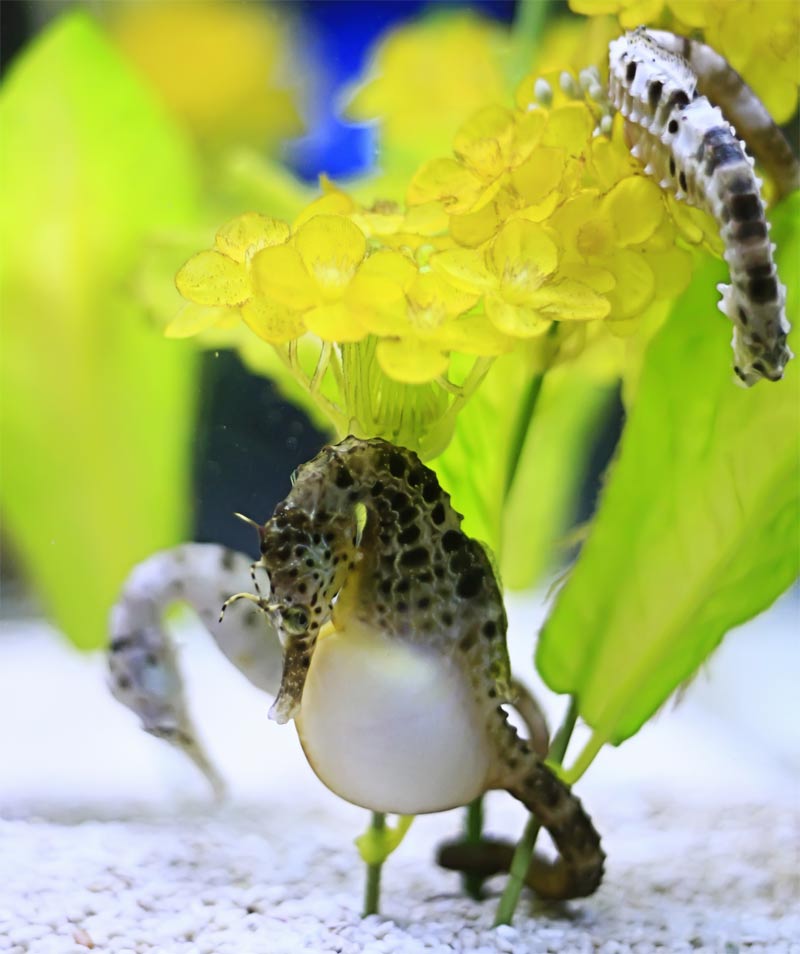Animal Sex: How Seahorses Do It

Seahorses are an oddity in the animal kingdom: Males, rather than females, get pregnant and give birth to young. But aside from this well-known fact, what else have scientists learned about the mating behaviors of seahorses?
To start, seahorses aren't the only animals that exhibit this strange sex role reversal, said Adam Jones, a biologist at Texas A&M University who studies Syngnathidae, the taxonomic family that includes seahorses, pipefishes and sea dragons. In fact, male pregnancy is a ubiquitous trait among Syngnathidae species.
Male and female pairs of seahorses first get together at the start of the breeding season, which usually lasts from spring to late fall. Scientists don't know exactly how individuals choose mates, but "it would make sense that they use a combination of visual and chemical cues," Jones told LiveScience.
Syngnathidae males tend to be the choosier sex — the opposite of many other animals on Earth. Studies have also shown that some seahorse species have "size-assortativemating," in which males and females pair off with individuals of their own size.
Before the female deposits her eggs into the male's pouch with her ovipositor, the seahorse pair will conduct a lengthy courtship dance, where the couple synchronizes their movements and swims around together. After the male receives his mate's eggs, he releases his sperm into the seawater; the sperm quickly find their way into the male's pouch, though scientists aren't sure how.
Interestingly, males of all seahorse species have pouches, but the males of some Syngnathidae species don't — the female's eggs simply adhere to the surface of the male's body in those species.
Some seahorse species form pair bonds that stick together for an entire breeding season (they are not known to form lifelong monogamous pairs, contrary to popular belief). In these species, the couple will meet up each morning to do a little dance, which sometimes involves entwining their tails together. "The idea is that the female is checking on the status of the male," Jones said.
Sign up for the Live Science daily newsletter now
Get the world’s most fascinating discoveries delivered straight to your inbox.
After just two weeks of pregnancy, the male will give birth, but he takes no part in raising his offspring. Instead, his pair-bonded mate (or a different female, depending on the species) will impregnate him again shortly after he gives birth. This cycle continues for the rest of the breeding season.
Follow Joseph Castroon Twitter. Follow us @livescience, Facebook & Google+.











